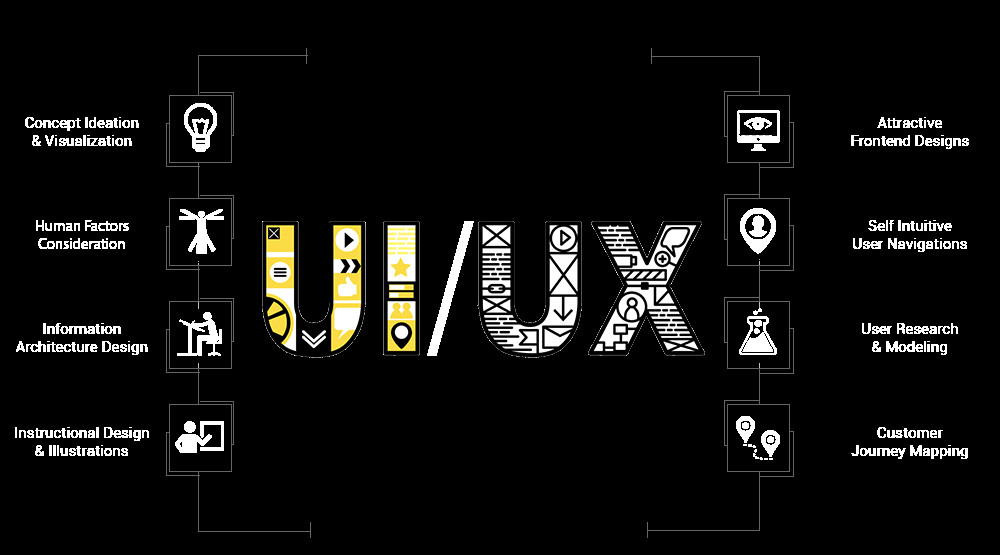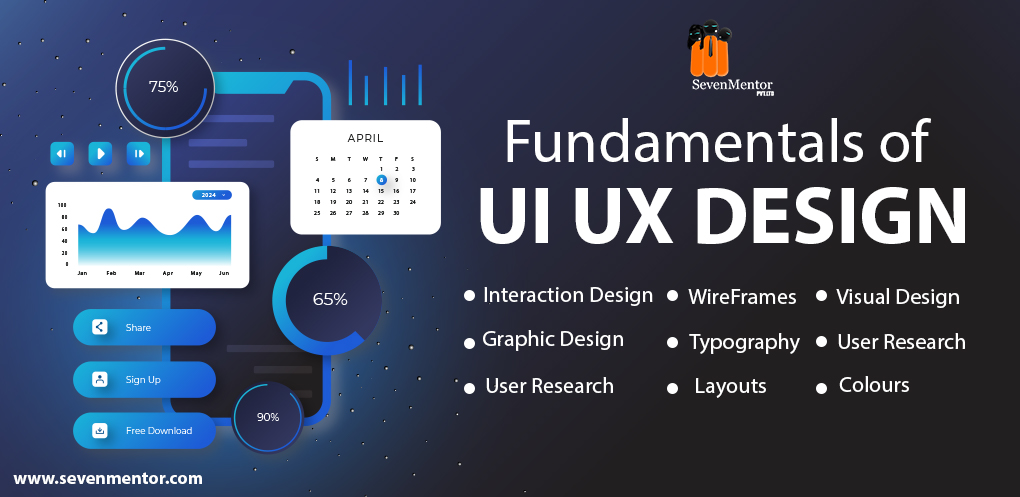UI/UX DESIGN
INTRODUCTION
Embark on a captivating journey into the realm of UI/UX design, where innovation and user engagement converge to shape the digital landscape. UI/UX design, an acronym for User Interface and User Experience design, represents a holistic approach that transcends mere aesthetics. It encompasses the art of crafting visually appealing interfaces and the science of ensuring intuitive functionality, striking a delicate balance between creativity and practicality.
Effective UI/UX design extends beyond visual appeal, delving into understanding user behavior, preferences, and challenges. Designers meticulously craft every element of the user journey, aiming to evoke positive emotions, enhance productivity, and foster a profound connection between users and the digital products they interact with. In today’s fiercely competitive digital arena, businesses that prioritize UI/UX design gain a significant advantage. Well-designed interfaces not only captivate and retain users but also serve as catalysts for increased conversions, unwavering customer loyalty, and an enhanced brand reputation. By investing in UI/UX design, companies unlock the true potential of their digital offerings, leaving an indelible mark on their target audience.

THE FUTURE OF UI/UX DESIGN:EMERGING TRENDS
Voice user interfaces (VUIs) are gaining popularity, allowing users to control devices and access information using their voice, offering a hands-free alternative to traditional graphical interfaces. As voice recognition technology improves, VUIs are expected to become more prevalent, enhancing convenience and accessibility.
Augmented reality (AR) is another transformative technology impacting UI/UX design. By overlaying digital information onto the real world, AR creates immersive experiences, enabling users to interact with virtual objects in their physical environment. This capability opens new possibilities for engaging and interactive user experiences.
Artificial intelligence (AI) is increasingly integral to UI/UX design, facilitating intelligent interfaces that adapt to user preferences and automate tasks. From personalized recommendations to automated customer service, AI enhances user interactions and streamlines processes, freeing designers for more creative endeavors.
These trends represent just a glimpse into the future of UI/UX design. As these technologies evolve, we anticipate even more innovative ways to interact with digital products and services, driving forward the evolution of user experiences.

UI/UX DESIGN TOOLS AND RESOURCES
In the realm of UI/UX design, a diverse array of indispensable tools and resources empowers designers to turn their creative visions into tangible realities. Among the comprehensive solutions, Adobe XD stands out, offering seamless integration of vector-based design, prototyping, and animation capabilities. Its intuitive interface and robust feature set make it a top choice for professionals. Figma, another prominent player, provides a cloud-based platform facilitating seamless collaboration among designers regardless of their locations. With real-time editing and an extensive plugin ecosystem, Figma empowers designers to elevate their creative processes and produce exceptional outcomes.
Alternatively, Sketch offers a lightweight approach with its vector graphics editor tailored specifically for UI/UX design. Its intuitive interface and vast library of pre-designed elements make it ideal for rapid prototyping and iteration. These tools represent just a fraction of the UI/UX design resources available, each catering to specific design requirements and preferences. Designers must carefully assess their needs before selecting the tools that best align with their creative endeavors.

UNDERSTANDING THE FUNDAMENTALS OF UI/UX DESIGN
Understanding the fundamentals of UI/UX design is essential for creating positive user experiences and ensuring that users can easily achieve their goals. Fundamental principles of UI/UX design include simplicity, consistency, and user-centered design. Simplicity involves creating designs that are easy to understand and use, while consistency ensures that similar elements and interactions are used throughout the product or service. User-centered design prioritizes the user’s needs and preferences throughout the design process.
Creating user personas and user journeys is crucial in UI/UX design. User personas represent different types of users based on research and data, helping designers understand their needs and goals. User journeys map out the steps users take when interacting with a product, identifying pain points and opportunities for improvement. Various UI/UX design tools are available, such as Adobe XD, Figma, Sketch, Balsamiq, and Webflow, each with its own strengths and weaknesses. Designers should carefully evaluate their needs before selecting the tools that best align with their creative endeavors.
Lastly, it’s important to avoid common UI/UX design mistakes, including poor visual hierarchy, inconsistent design elements, lack of user testing, and ignoring accessibility guidelines. By following best practices and avoiding these mistakes, designers can create effective UI/UX designs that enhance user experience and achieve business goals.

CONCLUSION
UI/UX design is integral to creating user-friendly digital experiences. By adhering to fundamental principles and understanding user needs, designers can craft interfaces that are intuitive, aesthetically pleasing, and effective. Thoughtful UI/UX design ensures seamless navigation and interaction, enhancing overall user satisfaction.
As technology advances, UI/UX design will continue to evolve, driving innovation in digital interaction. By staying updated and embracing new tools and techniques, designers can create memorable and exceptional user experiences. Ultimately, effective UI/UX design is essential for building successful digital products and services.
